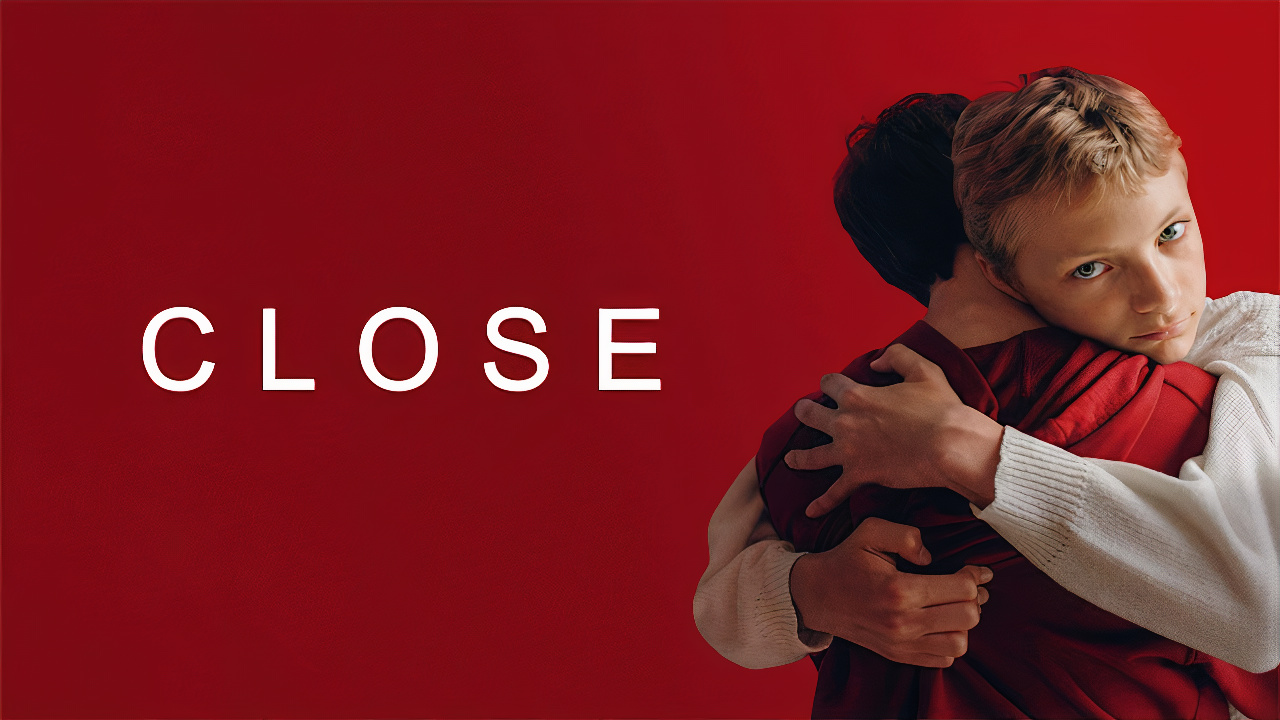The Power of Friendship and Identity in “Close”
In the powerful and thought-provoking film “Close,” directed by Lukas Dhont, themes of love, grief, masculinity, and healing take center stage, as the haunting story of an extraordinary friendship unfolds. Through the journey of thirteen-year-old best friends Leo and Remi, played by Eden Dambrine and Gustav De Waele respectively, the film explores deeply-rooted societal assumptions about masculinity and the impact they have on personal identity and emotional expression. Dhont’s masterful storytelling captivates the audience, leaving a lasting impression on their hearts.
A Question that Challenges Assumptions
Early on in the film, Leo and Remi find themselves confronted by a classmate’s question that challenges their friendship. When asked if they are a couple, the boys quickly deny it, emphasizing that they are simply best friends. However, the exchange highlights a troubling double standard ingrained in society. While affectionate behavior between girls is easily acknowledged as friendship, the same closeness between boys is assumed to be romantic. This scene serves as a pivotal moment not only in the story’s progression but also as a sharp critique of societal expectations of masculinity.
As a result of this encounter, Leo is thrust into a period of self-doubt and confusion. The once carefree and imaginative friendship he shared with Remi becomes clouded by society’s expectations of masculinity. Leo feels the need to conform to the rigid ideals of manhood, suppressing his emotions and distancing himself from Remi. He joins a hockey team and seeks acceptance from other boys, all in an attempt to fit into society’s narrow definition of masculinity.
A Narrative Transformation: Love, Grief, and Healing
As the story progresses, “Close” undergoes a powerful transformation. It becomes a film that explores not only the complexities of identity and masculinity but also the profound impact of grief and the healing power of emotional connection. Revealing more about the plot would diminish the emotional impact and spoil the viewer’s experience. It is best to allow the narrative to unfold organically, providing a deeply personal and resonating journey.
This transformation, however, showcases the profound impact of grief on Leo’s life. As he steers away from Remi and isolates himself emotionally, he discovers the importance of leaning on others for support and the necessity of acknowledging and processing painful emotions. “Close” empowers its audience by illustrating the transformative nature of grief and the role it plays in personal growth and self-discovery.
Unearthing Authenticity through Performances
The performances in “Close” contribute significantly to its impact. Eden Dambrine and Gustav De Waele bring a remarkable chemistry to their roles, breathing life into Leo and Remi’s intricate friendship. Dambrine’s portrayal of Leo stands out, as he skillfully navigates the complex emotional terrain of a conflicted character. With minimal dialogue, Dambrine conveys a multitude of emotions through nuanced expressions, captivating the audience’s attention effortlessly. Both Dambrine and De Waele, despite being newcomers, demonstrate exceptional talent and promise for their future endeavors.
The supporting cast, including Emilie Dequenne and Lea Drucker as Remi and Leo’s mothers, respectively, adds depth and context to the story. Each character plays a unique role that enhances the film’s overall meaning. Notably, Kevin Janssens delivers a haunting performance as Remi’s father, leaving a lasting impression with a singular emotionally-charged scene that resonates deeply.
Technical Brilliance: Enhancing the Narrative
Through its technical elements, “Close” further elevates its storytelling prowess. The color palette, expertly handled by Laurens Orij, reflects the characters’ evolving emotions. From vibrant and warm tones symbolizing Leo and Remi’s cherished bond, to colder hues in settings where societal expectations prevail, the cinematography captures the essence of each moment. Frank van den Eeden’s skillful camera work immerses the viewers, utilizing dynamic shots and intimate close-ups to convey the characters’ innermost feelings. Handheld camera movements enhance the film’s emotional impact, fostering empathy for the delicate yet impactful themes explored. Sound designer Vincent Sinceretti strategically utilizes sound, or its absence, to heighten Leo’s state of mind, emphasizing key moments that draw audiences into the emotional depth of the story.
A Multilayered Exploration of Healing and Survival
“Close” invites viewers on a multi-layered journey, where themes of friendship, identity, masculinity, and grief intertwine. Ultimately, the film’s message centers around the healing process. Leo, much like his broken bone that mends over time, begins to heal by the film’s conclusion. However, this journey is not without pain and sorrow. Leo emerges stronger, carrying the weight of his grief and transformed by his experiences. This poignant tale reminds us that resilience is found in surviving and embracing the complex emotions life presents.
Frequently Asked Questions
1. How does “Close” challenge societal assumptions about masculinity?
“Close” challenges societal assumptions about masculinity by highlighting the double standards that exist regarding affectionate behavior between boys. It questions why closeness between girls is often viewed as friendship while the same closeness between boys is immediately assumed to be romantic. By delving into the impact of these assumptions on the main characters, the film prompts its audience to reflect on the harmful nature of rigid gender norms and societal expectations.
2. How does “Close” explore the transformative power of grief?
“Close” portrays grief as a catalyst for personal growth and self-discovery. As Leo grapples with the loss of his childlike innocence, the film emphasizes the importance of acknowledging and embracing painful emotions. Through the journey of healing, viewers witness how grief can lead to profound transformation, allowing individuals to rediscover their authentic selves.
3. What makes the performances in “Close” stand out?
The performances in “Close” are exceptional, with Eden Dambrine’s portrayal of Leo particularly striking. With remarkable subtlety, Dambrine conveys a wide range of emotions through nuanced expressions, captivates the audience’s attention, and brings an authentic depth to the character. The chemistry between Dambrine and Gustav De Waele further enhances the authenticity of Leo and Remi’s friendship, making it a truly memorable cinematic experience.
4. How does the technical execution contribute to the impact of “Close”?
The technical brilliance of “Close” enhances its storytelling impact. The carefully crafted color palette, adept cinematography, and meticulous sound design create an immersive experience for viewers. These elements not only complement the narrative but also elicit a stronger emotional response, allowing audiences to form a deeper connection with the characters and themes explored in the film.
5. What is the central message of “Close”?
The central message of “Close” revolves around the healing process and personal resilience. The film emphasizes that healing is often a slow and painful journey, where individuals carry the weight of grief and learn to embrace their complex emotions. By witnessing Leo’s transformation, viewers are reminded that survival and personal growth often arise from navigating and accepting the challenging aspects of life.
In Conclusion
“Close” is a profoundly moving film that explores the complexities of friendship, identity, masculinity, and healing. Lukas Dhont’s masterful direction, coupled with outstanding performances, captures the audience’s heart and mind. The film challenges societal assumptions, delving into the transformative power of grief and the resilience it cultivates. “Close” is not only a cinematic experience but also a deeply personal exploration of the human condition.












